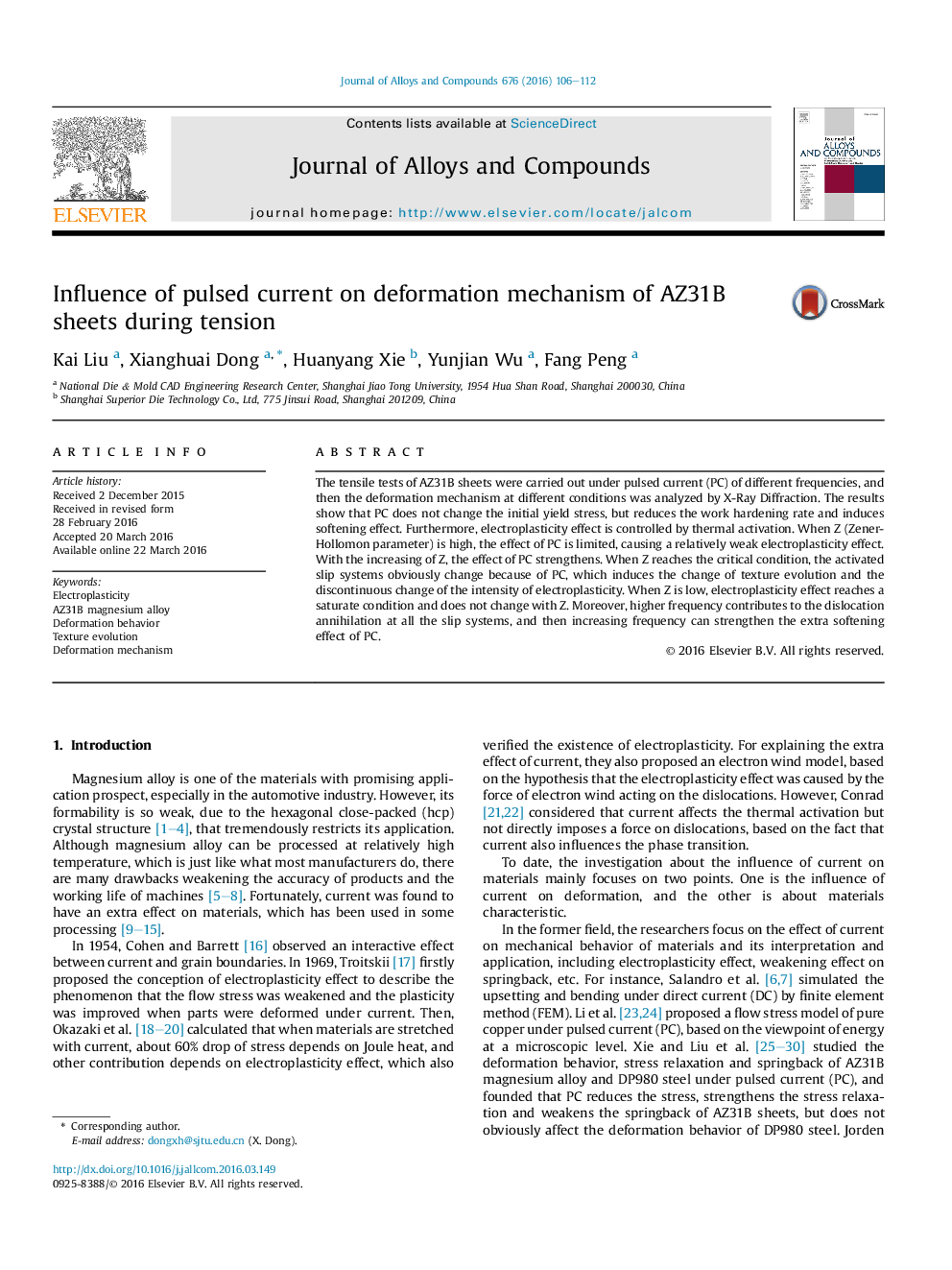| Article ID | Journal | Published Year | Pages | File Type |
|---|---|---|---|---|
| 1605783 | Journal of Alloys and Compounds | 2016 | 7 Pages |
•Pulsed current does not change the initial yield stress, but reduce the work hardening rate and cause softening effect.•Increasing frequency can strengthen the softening effect.•The rules of the softening effect at different deformation condition are different.•The influence of current on deformation mechanism was analyzed by XRD.
The tensile tests of AZ31B sheets were carried out under pulsed current (PC) of different frequencies, and then the deformation mechanism at different conditions was analyzed by X-Ray Diffraction. The results show that PC does not change the initial yield stress, but reduces the work hardening rate and induces softening effect. Furthermore, electroplasticity effect is controlled by thermal activation. When Z (Zener-Hollomon parameter) is high, the effect of PC is limited, causing a relatively weak electroplasticity effect. With the increasing of Z, the effect of PC strengthens. When Z reaches the critical condition, the activated slip systems obviously change because of PC, which induces the change of texture evolution and the discontinuous change of the intensity of electroplasticity. When Z is low, electroplasticity effect reaches a saturate condition and does not change with Z. Moreover, higher frequency contributes to the dislocation annihilation at all the slip systems, and then increasing frequency can strengthen the extra softening effect of PC.
